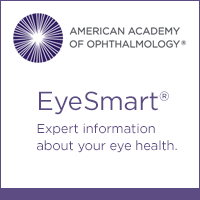
Macular Degeneration
Age-Related Macular Degeneration is one of the most common causes of central vision loss for senior citizens. The macula is located in the center of the retina in the light-sensitive layer of tissue in the back of the eye. Central vision is required for most focus necessary activities such as driving, reading, writing, or even having a face-to-face conversation.
There are two types of Macular Degeneration: Dry Age-Related Macular Degeneration (AMD) and Wet Age-Related Macular Degeneration (AMD). The dry form affects about 90% of people diagnosed with the disease. It is simply the gradual deterioration of the macula over time. It typically occurs in one eye at first, but it can eventually present itself in both over time. The wet form only affects 10% of those diagnosed, but it accounts for 90% of all the severe vision loss from the disease. It occurs when new blood vessels behind the retina start to grow toward the macula. Because these new blood vessels tend to be very delicate, they will often leak blood and fluid under the macula, which causes rapid damage, often leading to the loss of central vision in a short period.
The good news is that neither type of Macular Degeneration causes any pain, and because it primarily affects the central vision, complete blindness is extremely rare. Unfortunately, there are very few effective treatment options for Dry AMD. Thankfully, though, the dry form is a very slow process, and most people learn to use their remaining peripheral vision to compensate for their obstructed central vision. Most cases of Wet AMD can be treated by Avastin or Eylea injections for the leaking blood vessels.

